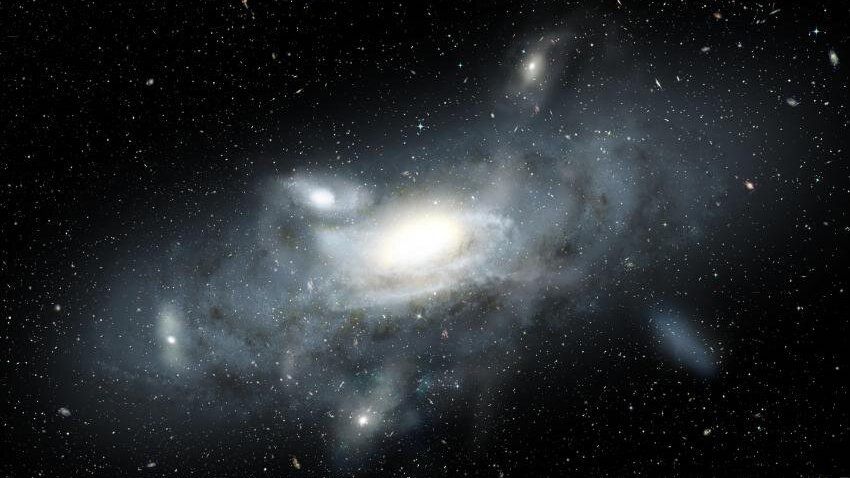James Webb telescope finds Milky Way's long-lost twin 9 billion years in the past
By Ben Turner published 3 days ago
The light from the distant Sparkler galaxy was spotted in the James Webb Telescope's First Deep Field and could teach us how our own Milky Way devoured other galaxies to grow.

An artist's impression of the Milky Way in its youth, surrounded by globular clusters. (Image credit: James Josephides, Swinburne University)
A sparkling cannibal galaxy discovered by the James Webb Space Telescope appears to be a "very early" mirror image of the Milky Way, and it could help astronomers understand how our galaxy took shape, a new study has revealed.
Located 9 billion light-years from Earth, the galaxy is named the "Sparkler" after the dwarf galaxies and two dozen globular clusters — swarms of millions of stars bound together by gravity — that shine around it. According to the study authors, the galaxy is voraciously gorging upon these nearby objects to grow ever larger.
The cosmic feeding frenzy was discovered in Webb's First Deep Field — the deepest and most detailed view of the universe ever captured, and the James Webb Space Telescope's (JWST) first full-color picture. Released in July 2022, the image shows the Sparkler galaxy as a warped orange line surrounded by spots of light. Now, an analysis published Dec. 26 in the journal Monthly Notices of the Royal Astronomical Society(opens in new tab) has revealed that the galaxy is growing by cannibalizing its neighbors — much like the young Milky Way is thought to have done.
"We appear to be witnessing, first hand, the assembly of this galaxy as it builds up its mass—in the form of a dwarf galaxy and several globular clusters," lead-author Duncan Forbes(opens in new tab), a professor of astrophysics at Swinburne University of Technology, Australia, said in a statement(opens in new tab). "We are excited by this unique opportunity to study both the formation of globular clusters, and an infant Milky Way, at a time when the universe was only one-third of its present age."
More:
https://www.livescience.com/james-webb-finds-milky-ways-long-lost-twin-9-billion-years-in-the-past
